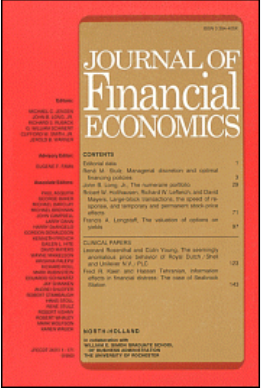金融科技进入、借贷市场竞争与福利
IF 10.4
1区 经济学
Q1 BUSINESS, FINANCE
引用次数: 0
摘要
我们提供了一个空间框架来研究银行和金融科技公司在贷款市场上的竞争,并研究对投资和福利的影响。基于银行和金融科技之间的关键差异,我们得出了与现有经验证据一致的结果。我们发现,监管效率较低的金融科技公司可以成功进入,因为它们的定价灵活性更强,银行集中度越高,金融科技公司的贷款额就越高。如果金融科技公司和银行具有相似的融资成本,金融科技公司的借款人支付的贷款利率较低,违约率高于具有相似特征的银行借款人;然而,如果金融科技公司的融资成本比银行高得多,结果就会相反。金融科技在提供便利方面的优势,也可能促使它们收取比银行更高的贷款利率。如果金融科技的监管效率高,金融科技之间的竞争强度中等,金融科技进入将提高福利。金融科技进入可能导致银行退出,减少投资;然而,如果金融科技之间的竞争足够激烈,它将增加投资。本文章由计算机程序翻译,如有差异,请以英文原文为准。
Fintech entry, lending market competition, and welfare
We provide a spatial framework to study competition between banks and fintechs in the lending market and examine the impact on investment and welfare. Based on the key differences between banks and fintechs, we derive results consistent with the empirical evidence available. We find that fintechs with inferior monitoring efficiency can successfully enter because of their superior flexibility in pricing and that higher bank concentration leads to higher fintech loan volume. If fintechs and banks have similar funding costs, fintech borrowers pay lower loan rates and have higher default rates than bank borrowers with similar characteristics; however, the result will flip if fintechs have much higher funding costs than banks. The advantage of fintechs in offering convenience can also induce them to charge higher loan rates than banks. Fintech entry will improve welfare if fintechs have high monitoring efficiency and inter-fintech competition intensity is intermediate. Fintech entry may induce banks’ exit and reduce investment; however, it will increase investment if inter-fintech competition is intense enough.
求助全文
通过发布文献求助,成功后即可免费获取论文全文。
去求助
来源期刊

Journal of Financial Economics
Multiple-
CiteScore
15.80
自引率
4.50%
发文量
192
审稿时长
37 days
期刊介绍:
The Journal of Financial Economics provides a specialized forum for the publication of research in the area of financial economics and the theory of the firm, placing primary emphasis on the highest quality analytical, empirical, and clinical contributions in the following major areas: capital markets, financial institutions, corporate finance, corporate governance, and the economics of organizations.
 求助内容:
求助内容: 应助结果提醒方式:
应助结果提醒方式:


